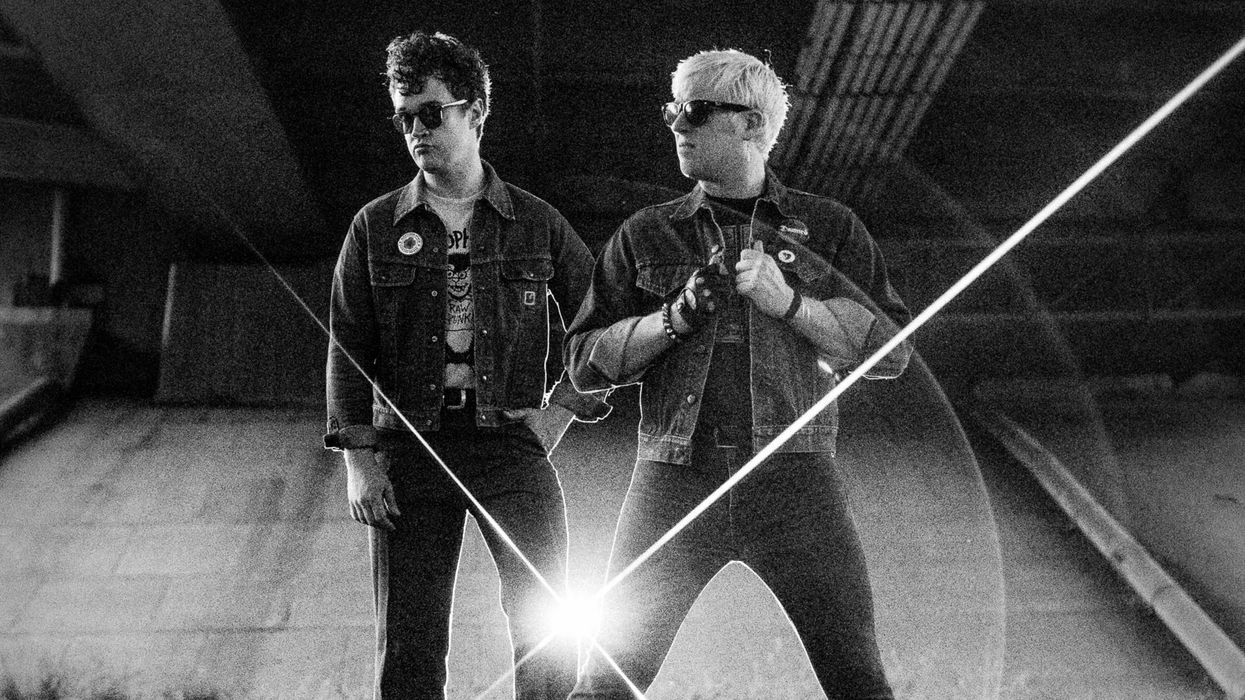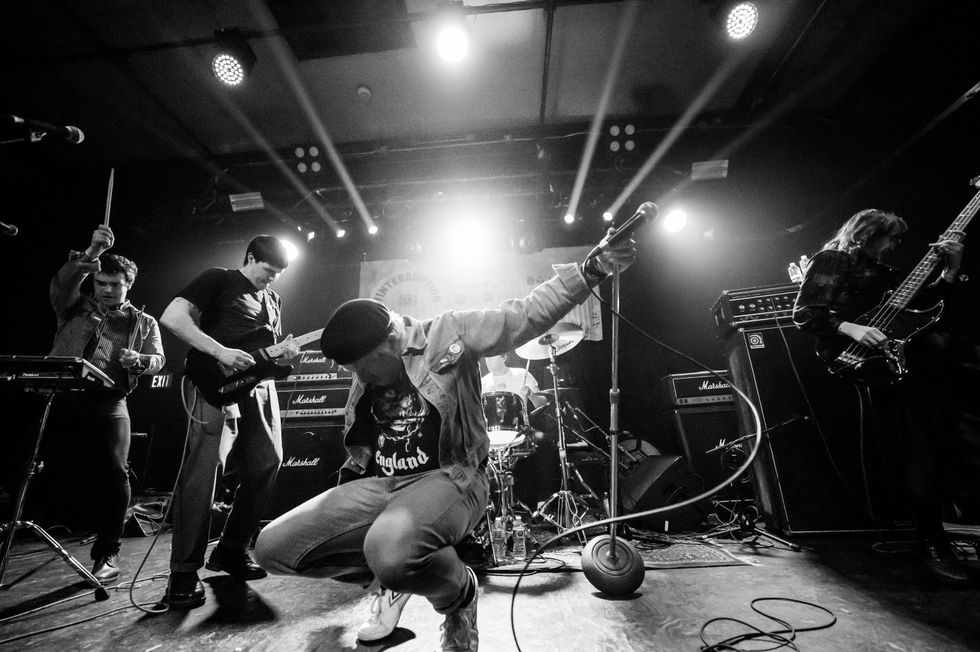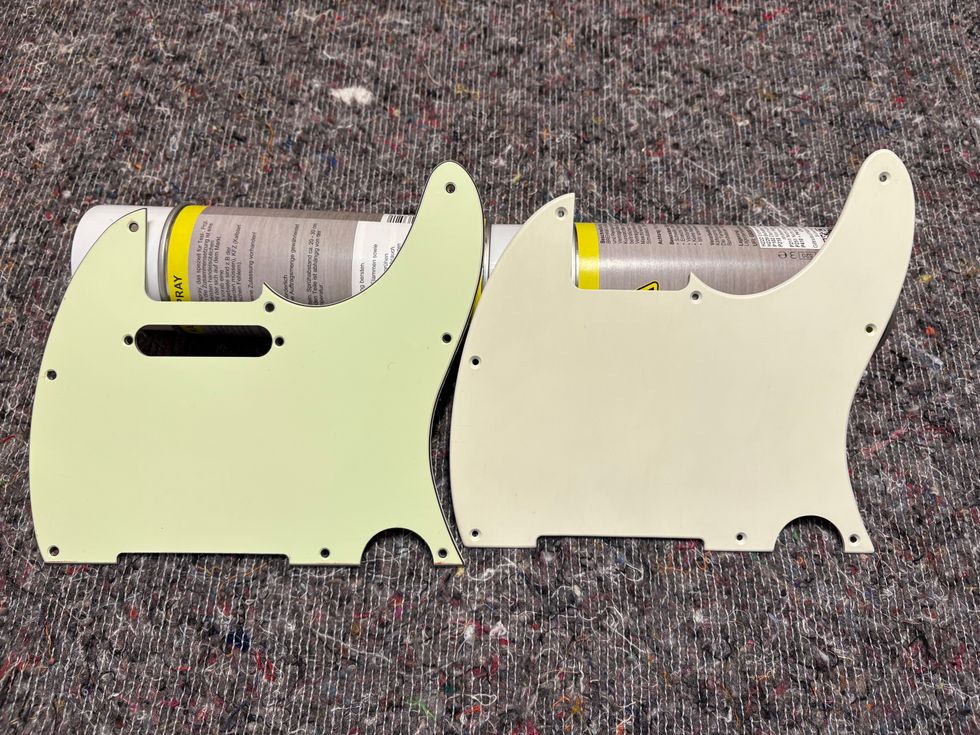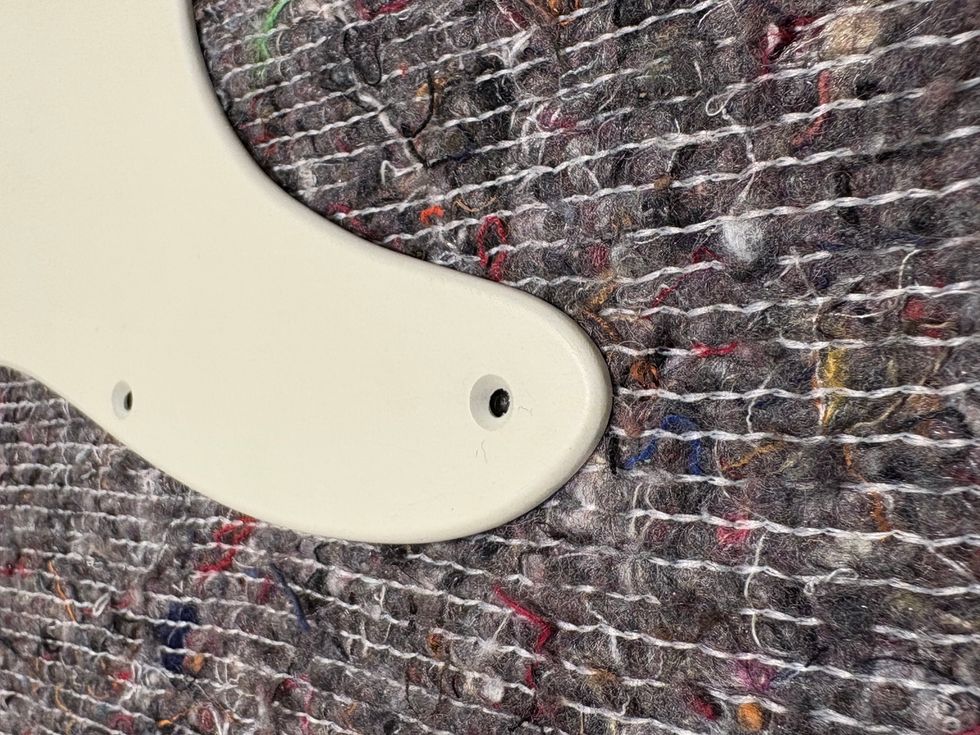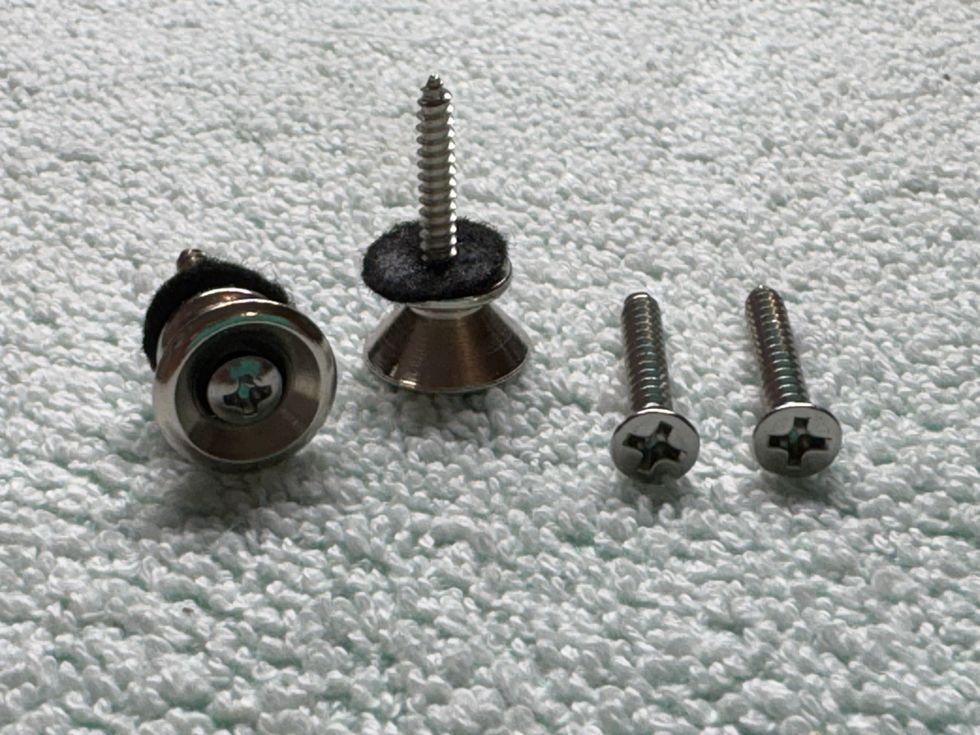How’s everyone doing? This month we’ll take another little trip down memory lane. You may have noticed how often I’ve mentioned tiny, 5-watt (or less) practice amplifiers for recording. One of my recent favorites has been the Fender Champion 600. You might remember a few issues back, when I was recording late into the wee hours of the morning? I stumbled across a particular signal chain that sounded just stellar at pin-drop volume: my guitar plugged into a BJFE Baby Blue Overdrive pedal and connected directly to the input of the Champion 600. From there, I used a really cool-sounding combination of a small diaphragm condenser microphone (Neumann KM 184), connected to my Great River ME-1NV mic preamp right before it hit my Pro Tools Digi 002 Rack.
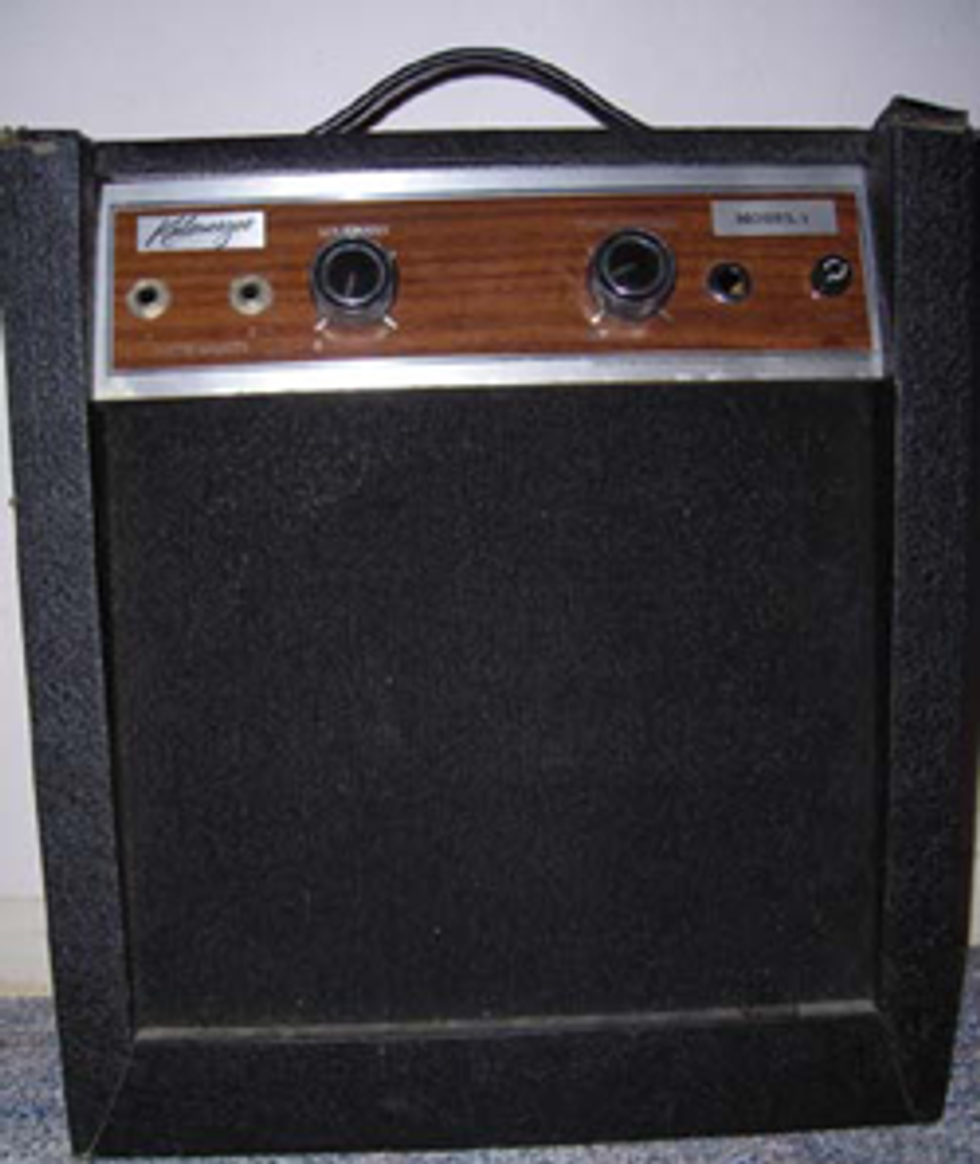 Kalamazoo Model One |
The Kalamazoo Model One has one RCA 6BQ5 (aka EL84) output tube, along with a single RCA 12AX7A preamp tube, and sports an old-fashioned RCA 6X4 tube rectifier. The single, class-A EL84 puts out roughly 5 to 7 watts RMS, and gives you a nice, warm tone at lower to medium volumes.
Inside the Kay Model 703, the layout is similar to the Kalamazoo. However, it has some odd tube choices when compared to today’s modern practice amps: a 35Z5 rectifier tube; a 50L6 model output tube that puts out a healthy 3.8 watts (using cathode-bias at 200V, according to the RCA Receiving Tube Manual); and a 12AU6 pentode preamp tube positioned in the corner of the amplifier’s chassis.
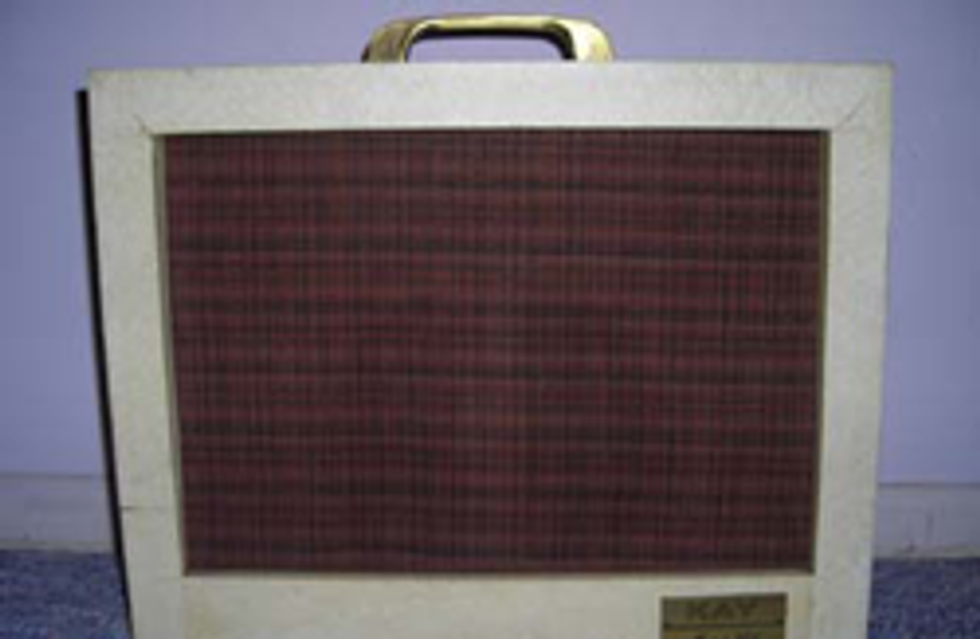 Kay Model 703 |
The Gibson Skylark GA-5T uses a 6EU7 preamp tube. A pair of EL84s power the combo, giving it about 12 to 15 watts of power. There is also a 6C4 tube found inside this combo. One of the coolest things about the Skylark GA-5T is the tremolo circuit, which is very, very deep and rich sounding. This feature alone could make the amp highly useful for recording cool sound effects.
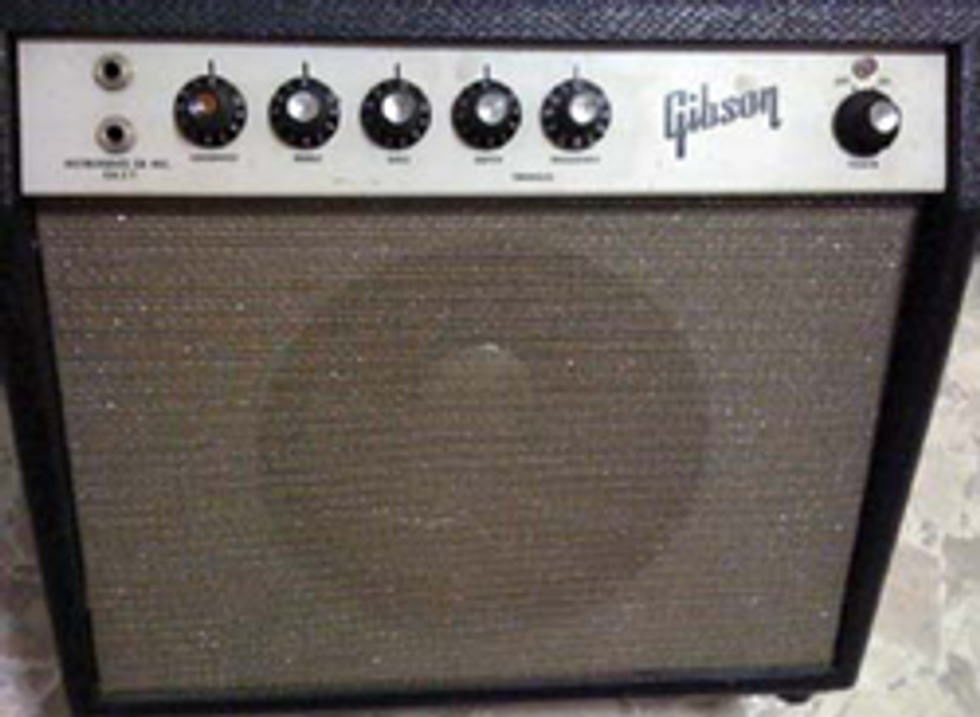 Gibson Skylark GA-5T |
With the amps all sitting in the main recording room of the studio, the first pedal to hit the Kalamazoo’s main input jack was a Crowther Audio Hotcake. This was more than great, as the sound I heard emanating from the 10” off-brand speaker was akin to a lovely sounding roar! It was stunning, to be quite honest. Single-coil guitars sound absolutely righteous through the Kalamazoo Model One. Apparently, it can be any style of single coil, too, whether they’re “small aperture” single coil pickups (like your typical narrower Fender pickups) or any larger single coils, such as the old-style DeArmond Dynasonics used back in the mid-fifties.
It’s important here to note that you should experiment with the various instruments in your own collection, as you’ll likely find that some will bond instantly with one particular amplifier, while other guitars will have you sitting on the fence. Believe me, you’ll know immediately which guitar works when you plug it in. There have been some really magical moments for me since I’ve gotten these little tone machines back.
Just in case you’re wondering, I paid $5 for the Skylark and $25 for the Kalamazoo Model One. The Kay 703 came with a guitar—I paid a grand total of $20 for both of them. The moral of this story: keep your eyes peeled for neighborhood garage sales. Tonal treasures are living right under your nose. Have fun; we’ll see you next month.
Dean Farley
Dean is the chief designer of "Snake Oil Brand Strings" (sobstrings.net) and has had a profound influence on the trends in the strings of today.








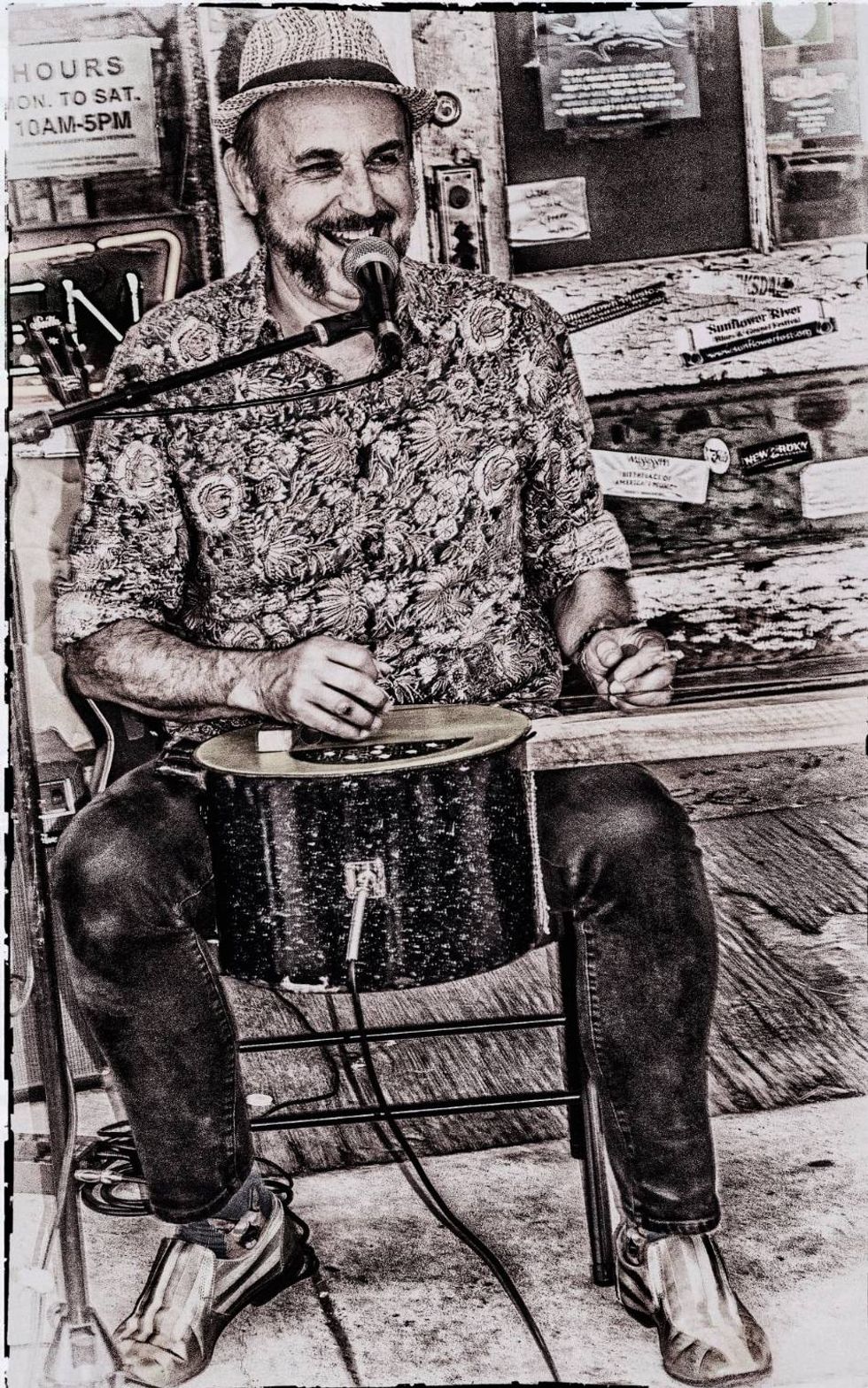
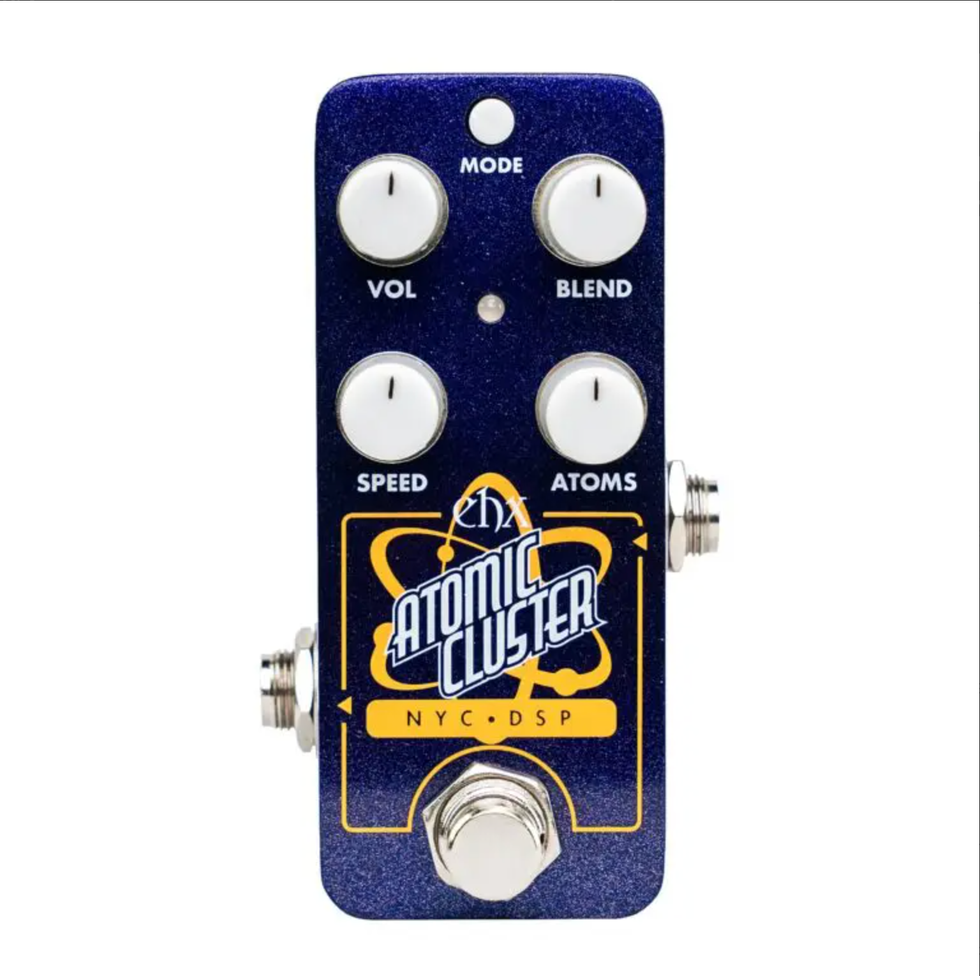


![Rig Rundown: Russian Circles’ Mike Sullivan [2025]](https://www.premierguitar.com/media-library/youtube.jpg?id=62303631&width=1245&height=700&quality=70&coordinates=0%2C0%2C0%2C0)




